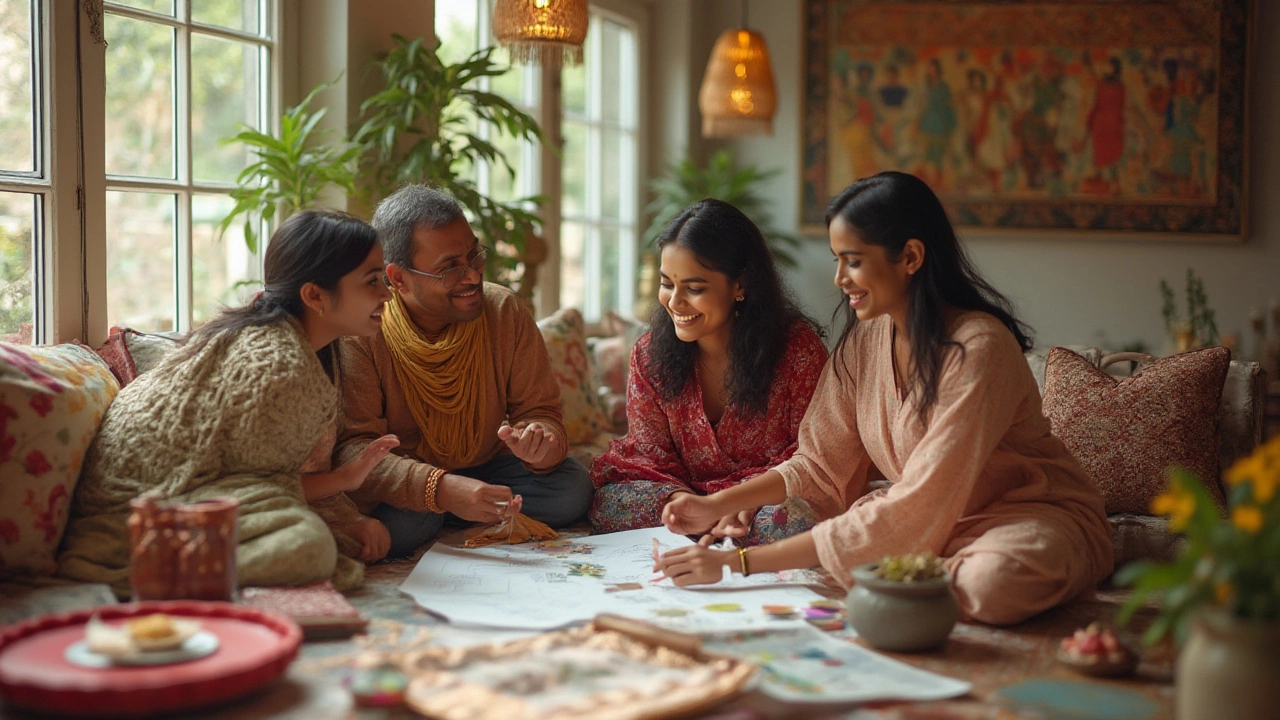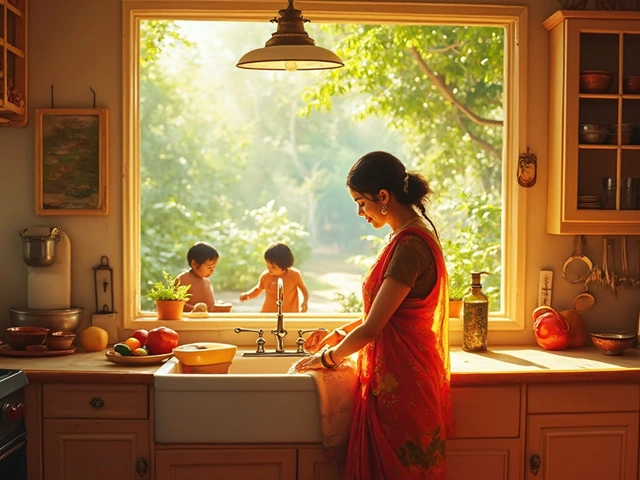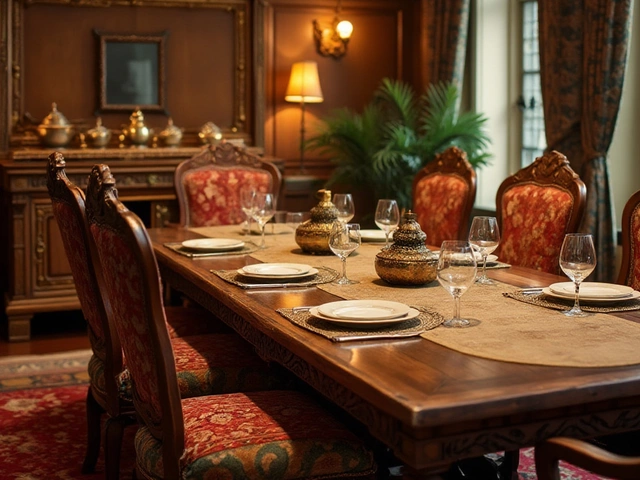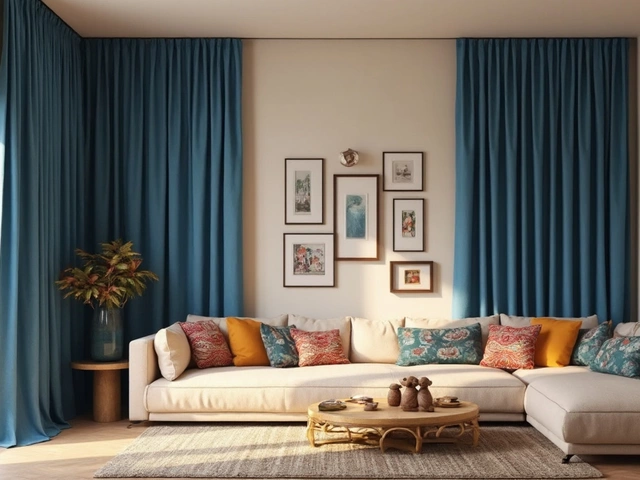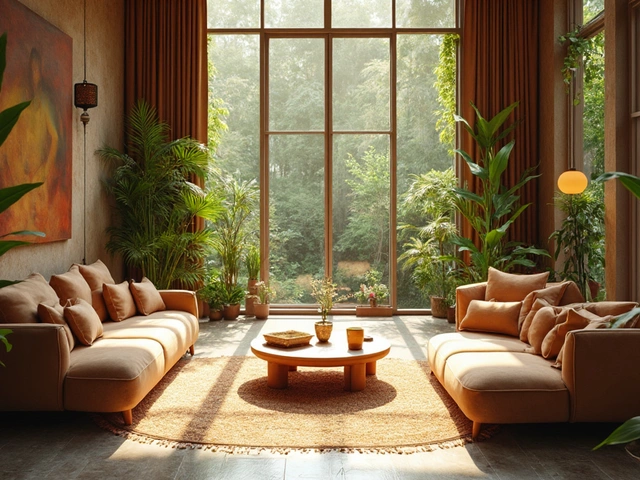Let’s get real—most of us weren’t born with an eye for transforming four walls and a ceiling into a place that actually reflects who we are. Yet, there’s a weird comfort in a messy living room that just needs some vision. Interior design from scratch? It sounds impossible when you’re surrounded by mismatched furniture, a weird inherited lamp, and walls that scream ‘rental beige.’ But starting with nothing is a shot at pure freedom. No old design mistakes to cover up, no grandma’s curtains standing awkwardly in the corner. What you do next is fully up to you, and honestly, that’s half the fun. Turns out, it’s not about dropping loads of cash or nailing every trend you see on Pinterest. Instead, it’s about small, concrete choices working together to tell your story.
Finding Your Interior Style Without Losing Your Mind
You can totally ignore the myth that real interior design is only for the artsy or loaded. The first step isn’t heading to the shops or buying fancy magazines—it’s thinking about how you want to feel at home. Your style doesn’t live in an expensive Paris flat or a random influencer’s Instagram. It’s hiding in what you wear every day, where you scroll online, and maybe, in that annoying teapot you can't seem to throw away. Want concrete examples? If you’re like me—someone who prefers jeans, sneakers, and simple tees—you’re likely to feel at home in a space that feels unfussy and casual. Maybe scuffed hardwood floors, a comfy modular sofa, and framed snapshots of road trips. But say you’re into classic rock posters, or your partner Lila loves houseplants. Suddenly, you’ve got the beginnings of a mood board.
Mood boards sound fancier than they actually are. Grab your phone, hit up Pinterest, Instagram, or just save stuff you see in movies and homes you visit. Mix images—rooms, chairs, colours, or even a cool coffee cup. The pattern is what you’re hunting for. Look at what repeats: are there a lot of greens? Do all your fave spaces have low lighting and a pile of books? That’s a clue. This isn’t about impressing anyone, just about honing in on what genuinely makes you feel settled.
It’s worth knowing: a study from the University of New South Wales found people who personalize their spaces report higher daily happiness. Your version of personal might be bold paint, or it could be soft throws and calming art. The point? Trends are fun, but your comfort wins. So, save everything you’re drawn to. Once you’ve got a folder of images (try for 20–30), step back and do a gut check. If you don’t love it, don’t fake it.
Getting Real About Budget, Space, and What Actually Matters
“Start where you are, use what you have, do what you can”—it’s a quote that floats around self-help books, and honestly, it fits design too. Every decision is easier with your budget in view, no matter if it’s $200 or $20,000. Most people in Australia (yeah, including Sydney where cafes charge $7 for a coffee) start small. That’s not a weakness, that’s normal. And small steps add up. Here’s something most design shows skip: you don’t have to redo your whole place in one weekend. Instead, think room by room, or even corner by corner. List out every room you want to tackle—living area, bedroom, kitchen, whatever. Write beside each: ‘immediate needs’ (lighting, privacy), ‘nice to have’ (art, tech), and ‘wish list’ (like custom shelves or a balcony garden).
The secret weapon is measuring. Seriously—measure everything. That includes doorways and weird nooks, not just floor space. Countless people have had to return that ‘perfect’ armchair because it can’t squeeze through the hall. I’ve been there, and trust me, it’s a headache. There are free apps, or you can grab a tape measure. Jot down the numbers or snap a photo. Draw a rough floor plan. On the planning side, use painter’s tape to outline furniture on the floor. This visual hack helps you spot problems, like traffic jams around the sofa or nowhere to put your feet in the bedroom.
What about money? Prioritise items you’ll actually use: a decent mattress or blackout curtains for the bedroom, or storage for a busy entryway. Paint is hands-down the cheapest way to change a room—at Bunnings, you can get a litre for under $30. Play with small upgrades before big ones. Even swapping out lampshades or adding a few plants can shift the vibe dramatically. And don’t stress about matching everything. Lived-in beats showroom-perfect every single time.
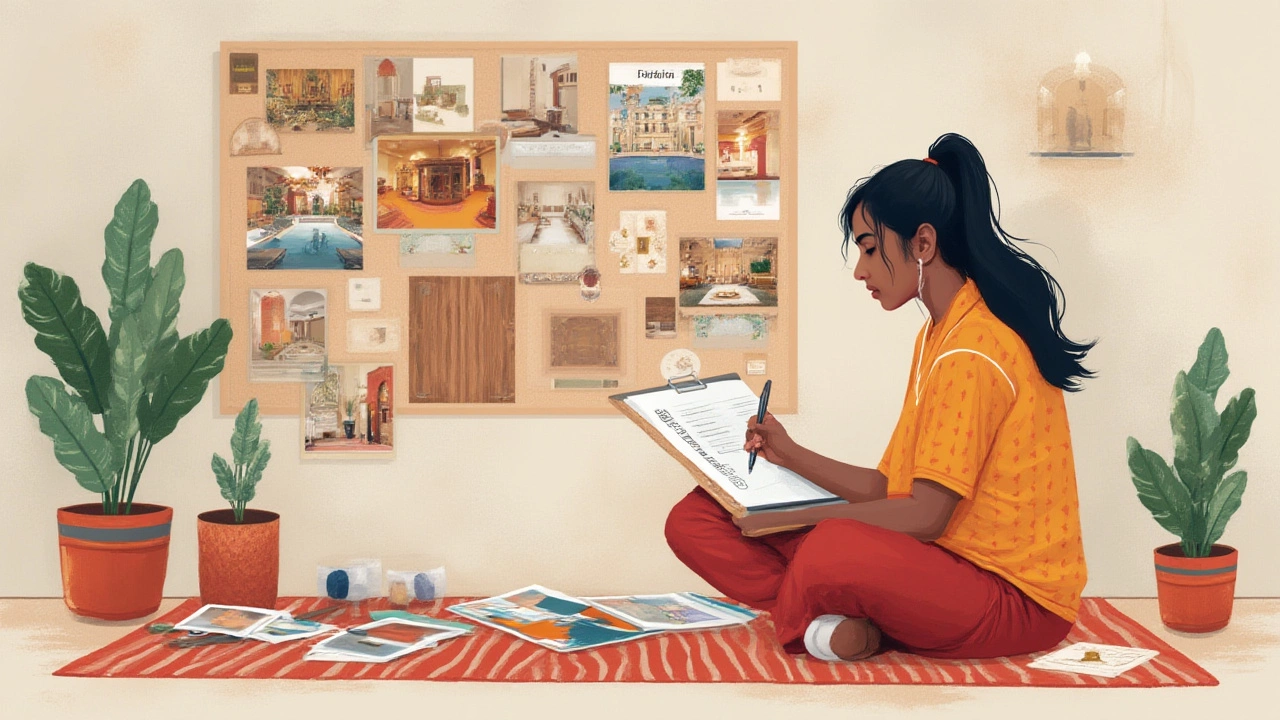
Choosing Colours, Materials, and Furniture Without Regret
Here’s a wild fact: people in Australia will repaint a room three times before landing on a favourite colour, according to Dulux’s 2024 survey. So don’t sweat the early mistakes. Start with a base—usually a simple neutral, like warm white or pale taupe. If neutral feels dull, bring in colours through soft furnishings: pillows, rugs, and art. If you love bold, then try a statement wall or vivid piece of furniture. The safest trick is to stick with three core colours: a dominant, a secondary, and a handful of accents. Can’t settle? Nature is full of colour combos that work. Walk around your neighbourhood, or scroll through Aussie landscape photos—think of gum tree greens, sandstone, and ocean blues. Let those inspire your palette.
Materials matter more than you think. Leather, linen, natural woods, and stone all have their own feel, literally. If you’re worried about kids or pets, go for smooth surfaces and wipeable fabrics. Don’t be fooled into buying flimsy stuff just because it looks good online. Many affordable stores in Sydney, like Fantastic Furniture and Kmart, get the job done with simple pieces you can customize later. IKEA may be a running joke, but their shelving can look high-end with a lick of paint or new handles. Reuse what you can: sand down old cabinets, dye faded throws, and mix vintage with new. This way, your place looks layered—not like it came in a box.
Furniture layout is the real heartbreaker if you mess it up. Remember, less is nearly always more. Leave breathing space, especially in apartments where rooms can double as gyms, offices, or, occasionally, yoga studios. Don’t block windows—Sydney’s winter sunlight is too precious. And skip the urge for everything to ‘match.’ Your favourite café probably has mismatched chairs. Turns out, consistency is often more boring than you’d expect.
Lighting, Textures, and Details: Making Your Home Uniquely Yours
Lighting is a silent dealbreaker in design. Too bright, and rooms feel sterile. Too dark, and you start tripping over shoes. The trick is layers. In every room, you want three types: ambient (main lights), task (like desk or kitchen bench lamps), and accent (mood or decorative). Table lamps, fairy lights, LED strips—mix them. For something simple but game-changing, swap out harsh cold bulbs for warm white. (The Kelvin number is your friend—look for bulbs around 2700K to 3000K for that cozy glow.)
Now, onto textures. Even if your place reads minimalist, layers matter. Think a chunky blanket on a smooth couch, woven baskets, or velvet cushions. Here’s a quick list folks swear by:
- Rugs that fit at least the front legs of your sofa/chairs
- Plants of different heights, real or fake
- Books (not just for reading, but for stacking)
- Mismatched ceramics or vases
- Soft curtains instead of plastic blinds
Art and personal finds turn a good room into something you actually want to hang out in. Frame your own photos. Use travel souvenirs, handmade ceramics, or even a band T-shirt stretched over a canvas. Sydney’s weekend markets are treasure troves for unique details. For renters, removable wallpaper or decals let you add colour without risking your bond. The smallest tweaks—like swapping hardware on an old dresser—can nudge a room from generic to personal in about twenty minutes. For bigger impact, mirrors expand small spaces and bounce precious natural light, but don’t overdo it unless you love seeing your own face every time you walk by.

Staying Flexible: Living With and Loving Your Evolving Space
The biggest myths in interior design are that there’s some final, perfect version you’ll reach and that everything has to stay ‘on trend.’ People’s needs change—work from home happens, babies show up, teens move out, rental agreements expire. What you love today might feel old next year, and that’s all right. The trick is learning to enjoy the process. Rearranging furniture is free and instantly refreshing. Moving art between rooms can surprise you—what looked tired in the bedroom might feel new in the living room.
Sydney, and lots of big cities, deal with small spaces and high prices. Flexibility makes you smarter with what you own. Modular shelving, folding tables, ottomans with storage—all these keep your place working harder and looking good. Don’t stress if your progress feels slow. Most real homes are never finished, and most designers experiment for years. Let friends bring a plant as a housewarming (I learned that the hard way, our Monstera is basically family now). Invite people over, even if your chairs don’t match yet. This isn’t about chasing magazine perfection. Instead, think about what makes you and the people around you want to stay a little longer, kick off their shoes, and actually live in the place.
Sometimes, you need a break. Step outside. Sydney’s parks, beaches, and wild light will make you notice shapes and shades differently next time you’re at home. If you feel stuck, change one thing—a pillow, a lamp, a layout. Don’t compare your progress to anyone else’s. Your space should feel like you, and the rest is just details.
